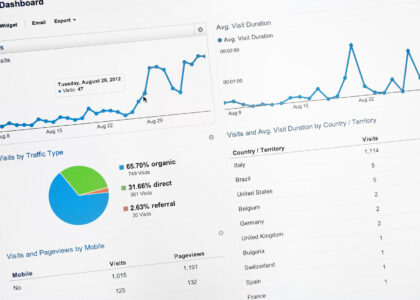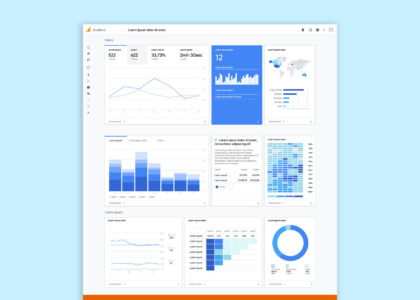In today’s market, web traffic is crucial to the success of your business. The more web traffic you have, the more likely it is that those visitors will become paying customers.
However, before your business can start profiting, it’s important to understand where your web traffic comes from. Is your business relying on organic or paid traffic?
What is organic and paid traffic?
Website traffic comes from two primary avenues: paid and organic traffic.
Organic traffic consists of the customers who click on your website from Google searches. This makes SEO know-how very important for generating organic traffic.
When a website is optimized to Google’s standards, it makes the website easily accessible to your audience. Good SEO will allow a site to rank more highly on the search engine results page (SERP) which will make it easier for customers to find you. This is what draws in organic traffic.
Paid traffic, on the other hand, is generated through pay-per-click marketing. This means that your business pays a fee every time a customer clicks on an ad for your business that takes them to your site.
It’s important to strike the right balance between paid and organic traffic in order to generate enough momentum for your brand.
Our marketing experts at Creative Coco’Nuts can help you strike that balance and optimize your web traffic.
Here are a few tips to get you started.
1. Optimize your website
Before you start developing an intensive marketing strategy, it’s important to check how well your website is performing. This is the foundation of successful marketing, and if there are cracks in the foundation, it’s almost impossible to build a sustainable and successful marketing campaign on top of it.
Check the logistics of your site first, such as load time, the volume of customers your site can hold, and if you have any broken links.
If your site takes longer than 4 seconds to load, as many as 38% of your customers will lose interest and take their business elsewhere.
And if your site doesn’t have the capacity to hold a high volume of customers, all your hard work of drawing in a larger audience will go to waste.
At this stage, you can also rethink your SEO strategy. Are your metatags optimized for SEO? Do you have the right mix of long-tail and short-tail keywords?
Make sure to assess these basic website design pitfalls early before you put money into a paid marketing campaign.
2. Don’t dismiss organic channels
Some businesses may dismiss organic traffic altogether since it takes longer to pay off and doesn’t result in immediate conversions like paid traffic does. But this isn’t a good strategy.
If you only rely on paid traffic, as soon as paid advertising is discontinued, your web traffic will completely dry up. However, if you’ve spent some time developing organic traffic as well, you’ll have a loyal audience to fall back on.
It’s important to nurture existing connections with customers to keep expanding your customer base and build brand loyalty. This includes posting consistent social media content, using email marketing techniques, adding new content to your website like blogs, ensuring your website information stays up to date, and encouraging customers to accept push notifications for your site.
Building a loyal customer base and fostering organic traffic will help your business in the long run, and it will ensure you have an audience to fall back on if you slow down or stop paid marketing strategies.
3. Use paid traffic when your organic presence falls through
It’s impossible to have outstanding organic traffic with every keyword that is relevant for your business, but that shouldn’t discourage you. This is where paid traffic comes in.
Invest in paid traffic for keywords that aren’t getting the attention you expect through organic traffic. For example, if customers search for a long-tail keyword relevant to your brand and your website only ranks 7th on the SERP for that keyword, invest in paid traffic for this keyword instead. This will ensure your website shows up high on the SERP in the ads section, and it will attract more attention from customers.
If certain keywords are getting lots of attention through organic traffic, you don’t have to focus on those same keywords in paid traffic. You can save your marketing dollars for keywords that need more attention instead.
The right balance
Finding the right balance between organic and paid traffic is tricky but essential. Like with any strategy, there are pros and cons to organic and paid traffic.
Using organic and paid traffic in tandem will help cancel out potential consequences of both strategies.
Paid traffic will keep your business profitable and you can easily track the success of pay-per-click campaigns, while an SEO-focused approach to organic traffic will build brand loyalty.
Setting up a comprehensive SEO strategy will pay off in the long run, and in the meantime, you can use paid traffic to see an immediate ROI.
Preparing your site for organic traffic will result in credibility, and while you’re waiting for all your hard work to pay off, you can get immediate results with paid traffic.




